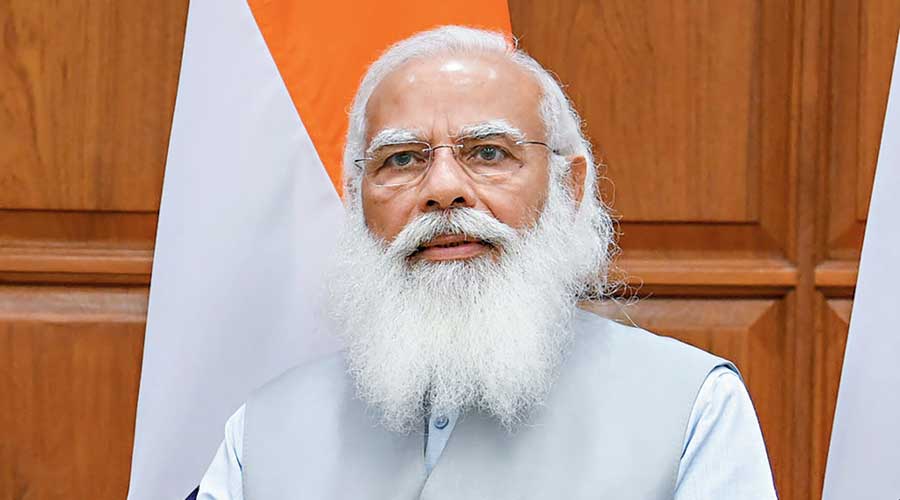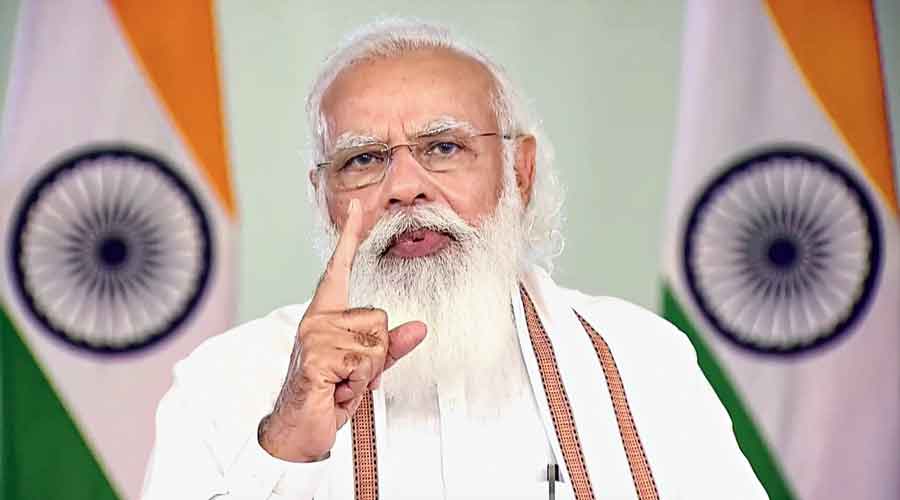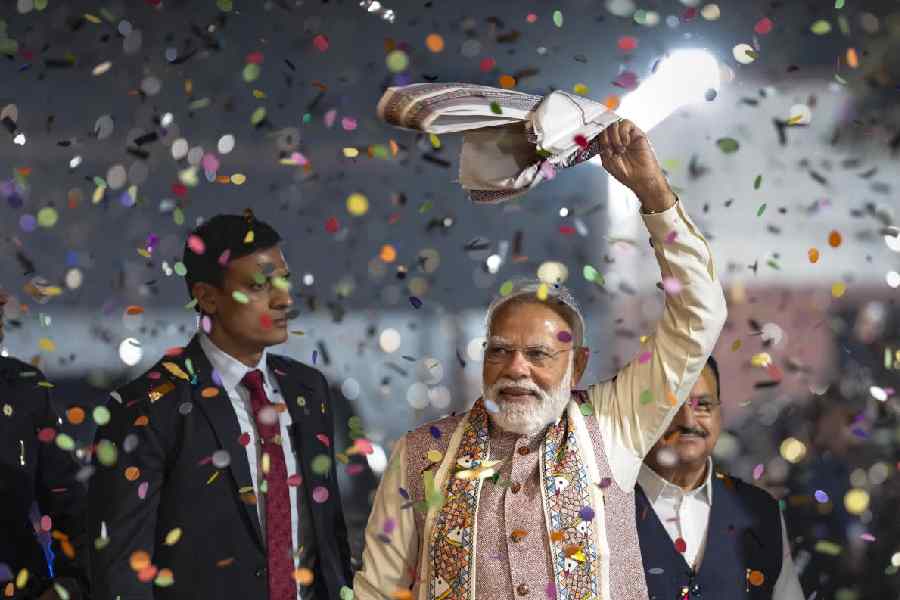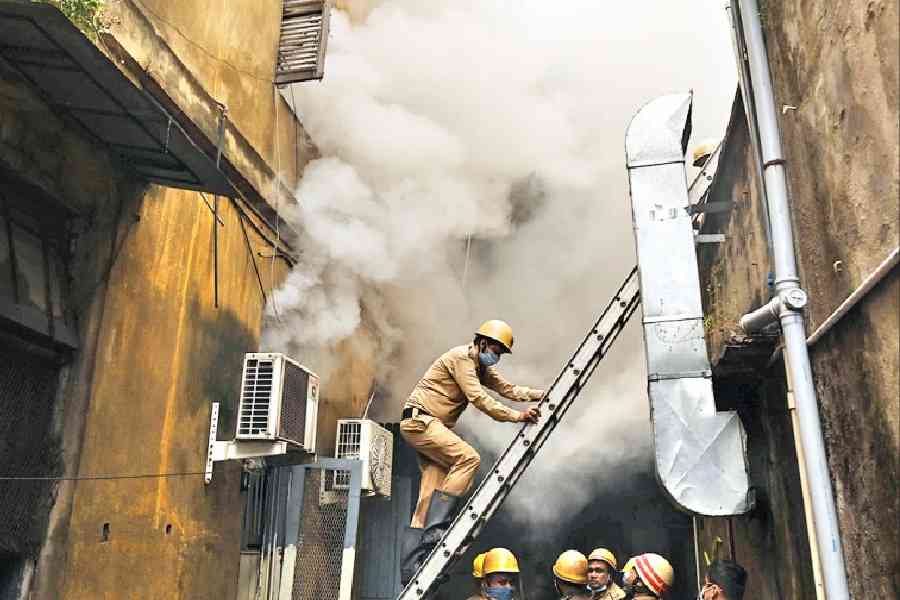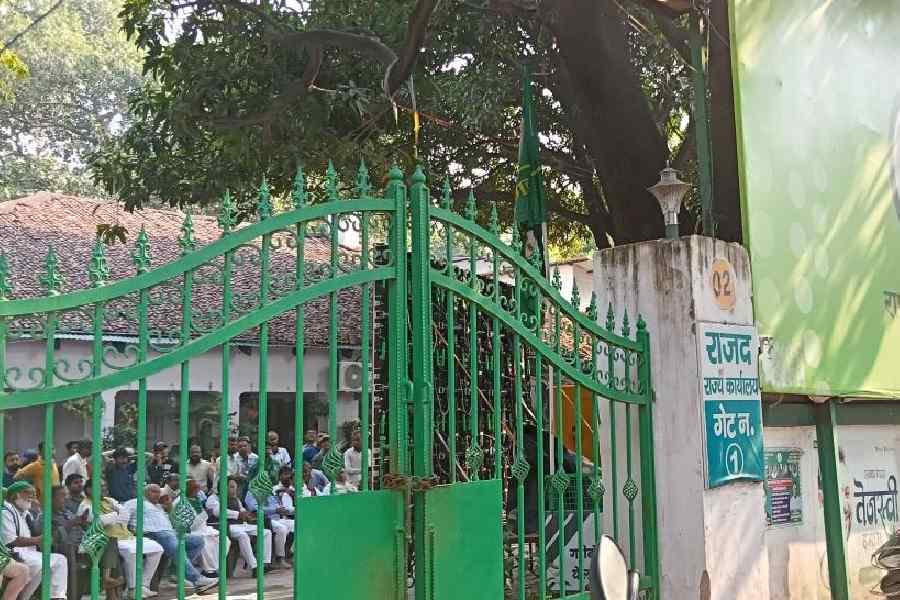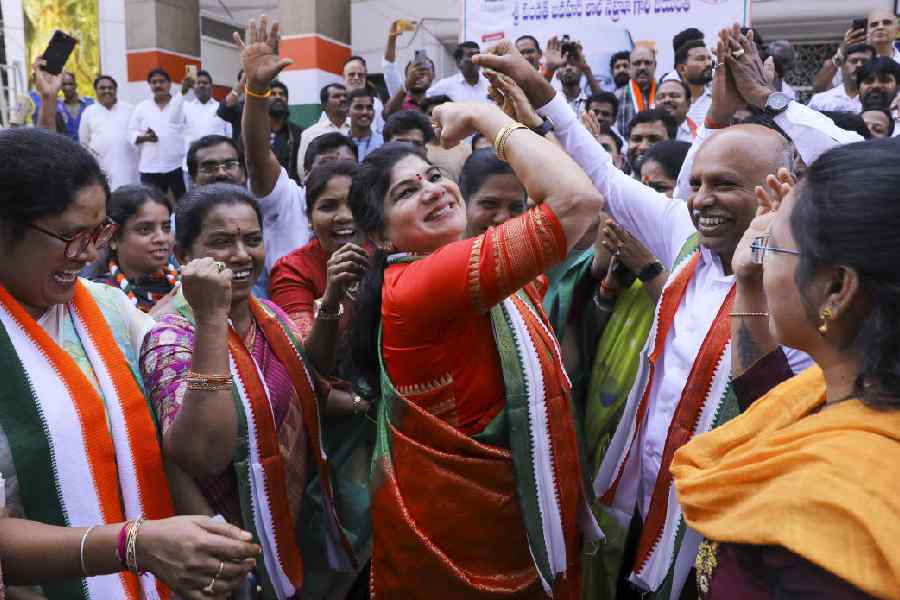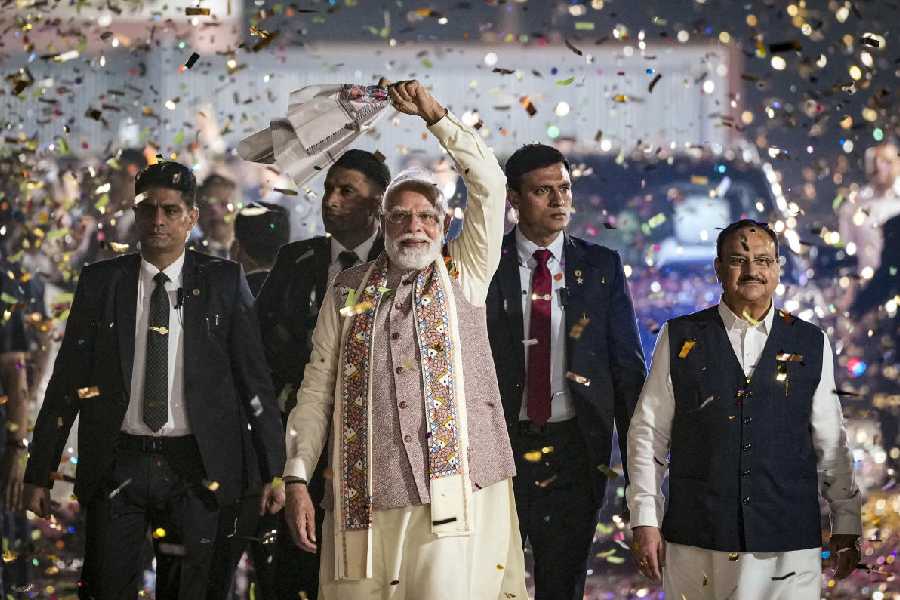The BJP’s attempt to appropriate the legacy of freedom fighter Raja Mahendra Pratap Singh to woo the powerful Jat community ahead of the Uttar Pradesh elections is steeped in irony because the Jat leader was a “proclaimed socialist”, a senior historian told The Telegraph.
“He (Mahendra Pratap) is being portrayed as a Jat icon as the community’s votes are slipping out of the BJP’s hands,” historian S. Irfan Habib, former Abul Kalam Azad Chair at the National Institute of Educational Planning and Administration, said.
“He was associated with the All India Jat Mahasabha which had many prominent Jats as office-bearers. Yet he never spoke of his Jat identity as he was a cosmopolitan man who spent 32 years outside India striving for our freedom.”
Habib added: “He was a proclaimed socialist and was in touch with Lenin as well. Although he never became a Marxist, he remained a Left sympathiser who wanted a pluralist, secular India.”
He noted that Mahendra Pratap had defeated Jana Sangh candidate Atal Bihari Vajpayee in the 1957 Lok Sabha polls as an Independent candidate.
Prime Minister Narendra Modi is scheduled to lay the foundation for the Raja Mahendra Pratap Singh University in Aligarh on Tuesday. The city is home to the Aligarh Muslim University, a central university which the BJP accuses of ignoring Mahendra Pratap, considered an alumnus of sorts and a benefactor.
The BJP has been championing the cause of celebrating Mahendra Pratap’s birth anniversary ever since the 2013 communal riots in western Uttar Pradesh breached the long alliance between the region’s Jats and Muslims and helped catapult the party to power at the Centre in 2014. Some local BJP politicians had demanded that AMU — not the party’s favourite university at the best of times — be renamed after him.
The current farmer agitation draws its strength from the Jats of the region. The establishment of a university in Mahendra Pratap’s name — two years after its announcement by chief minister Yogi Adityanath — is being seen as a BJP attempt to rebuild its image among the community before the Assembly polls, due in March.
Habib explained why the BJP was desperate to woo the Jats back. “To weaken the farm agitation, the BJP has tried to project it as a movement by Jat Sikhs and Jat Hindus that other farming communities, such as Gujjars, should keep away from. This has alienated the Jats from the BJP,” he said.
The BJP is known for its efforts to appropriate unlikely icons from the freedom struggle – from the socialist Bhagat Singh to the staunch Gandhian Vallabhbhai Patel – to paper over its lack of involvement in the independence movement and to try and embarrass the Nehru-Gandhis.
Mahendra Pratap (1886-1979), a Jat noble from the Mursan estate in Aligarh district, is perhaps best known for heading a rebel Indian government-in-exile in Kabul from 1915 to 1919.
“His prime minister was (Bhopal’s) Mohamed Barakatullah and his home minister was (Punjab’s) Ubaidullah Sindhi. His work in Europe and Japan laid the groundwork for Netaji (Subhas Chandra) Bose to later raise the Azad Hind Fauj,” said Habib, who had met Mahendra Pratap in 1977, two years before his death.
“After Independence, he never joined a party and was elected to Parliament from Mathura in 1957. Vajpayee came fourth.”
Mahendra Pratap studied from 1895 to 1905 at the Mohammedan Anglo Oriental College, which became Aligarh Muslim University in 1920.
After attending the Congress session in Calcutta in 1906, Mahendra Pratap campaigned against untouchability. He started an indigenous technical institute, the Prem Mahavidyalaya, in Vrindavan in 1909.
He left India in 1914 and led the German-backed and short-lived Provisional Government of India in Kabul. As its president, he was received by Lenin and Trotsky in Petrograd (now St Petersburg) in 1917.
Unable to return to India where there was a bounty on him, he fled to Japan in 1925 where he published a magazine. He remained there during the Second World War, returning to India in 1946.
His family had leased more than 30 acres of land to AMU in 1929 at the rate of Rs 2 a year. This land is now a playground used by a school run by the university. Mahendra Pratap’s father Raja Ghanshiam Singh had donated towards the construction of a hostel in the university.
Mahendra Pratap’s family, which has stayed out of politics, however, demanded the return of the land or its cost at the market rate after the lease expired in 2019, by when the rent had risen only to Rs 200 a year.
“The BJP tried hard to appropriate Bhagat Singh as well but with his reality, writings and work coming into the picture, they are not talking about him as much,” Habib said. “In the Raja’s case, the Jats have themselves forgotten about him.”
In the Hindu Jat pantheon of leaders, Sir Chhotu Ram and former Prime Minister Chaudhary Charan Singh have come to occupy the central positions.

